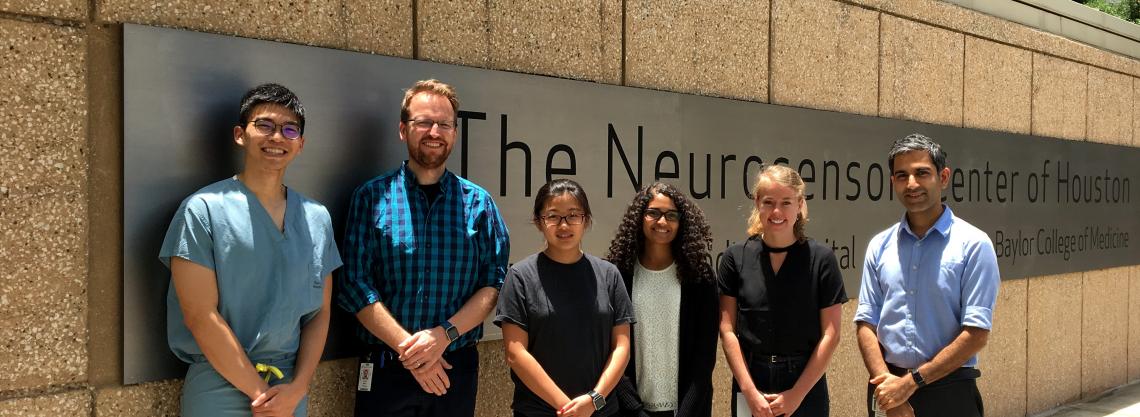
About the Lab
The Maheshwari Lab is interested in understanding the basic mechanisms underlying how the brain normally functions and how dysfunction in these processes leads to neuropsychiatric diseases such as epilepsy and Attention Deficit Hyperactivity Disorder (ADHD).
Our research studies normal mice as well as mice with genetic mutations that lead to neuropsychiatric disease. We use electrodes just over the surface of mouse brain to monitor activity both during and between seizures and while mice are challenged with behavioral tasks.
We also take these same approaches to evaluate patients with seizures who are monitored in the Epilepsy Monitoring Unit.
Lab Projects
Development of Sustained Attention
How does your brain manage to maintain focus on a task? Using simultaneous electrographic recording in the frontal and parietal regions of the brain during a standardized task of sustained attention (5-Choice Serial Reaction Time Task), we evaluate the dynamic changes in brain signals during the attentive, stimulus, and reward periods of the task. We have tools to selectively increase or decrease the activity of specific types of neurons in the brain. We have also been evaluating the development of these signals over time in both normal mice and mice with epilepsy and/or deficits in attention. The long-term goal of this research is to find better ways to help patients who have difficulty with maintaining focus.
Contribution of Specific Cell Types to Anti-Seizure Drug Response
Why do medications not work for 1 out of every 3 patients with epilepsy? Using a wide array of tools, we investigate how different types of neurons respond to seizure medications, and then subsequently we try to improve the effect of these medications by altering the distribution of neurons that are targeted. We also study the distribution of these drug targets in tissue resected from patients with drug-resistant epilepsy. The long-term goal of this research is to help develop better strategies for treating seizures.
Treatment of Dravet Syndrome
What strategies work to improve seizure control in Dravet Syndrome? Using a validated mouse model of Dravet Syndrome with a mutation in the sodium channel subunit encoded by Scn1a, we evaluate the potential of targeting a subset of potassium channels and the mechanism by which this strategy might be successful. The long-term goal of this research is to help control seizures in patients with Dravet Syndrome.








